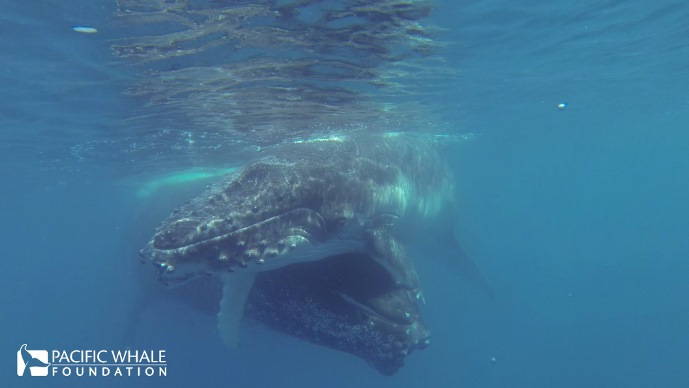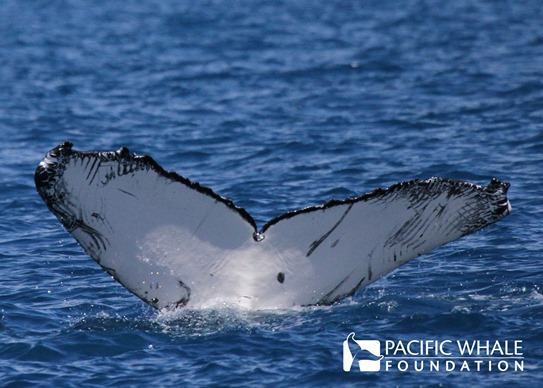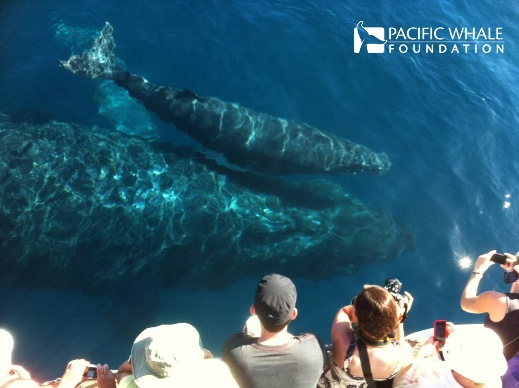There has been a change in the size and composition of humpback whale groups sighted within Hervey Bay as the season progresses. In the first weeks of August, yearlings (one-year old whales) and sub-adults (immature individuals of both gender) were mainly found in the bay. This is the time where you are more likely to be mugged by whales. By late August, mature females come in the area, followed by mature males and their songs can be heard throughout the bay. In mid-to-late season, i.e. September to October, the majority of groups sighted are mother-calf pairs as they tend to be the last groups to migrate south to the Antarctic feeding grounds.
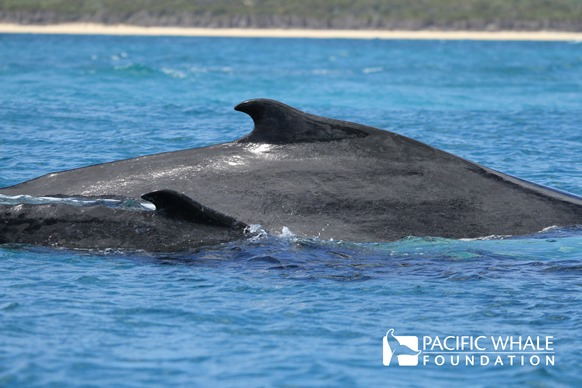
Photos taken under QLD permits: QS2011/GS040 and Registration #307. 
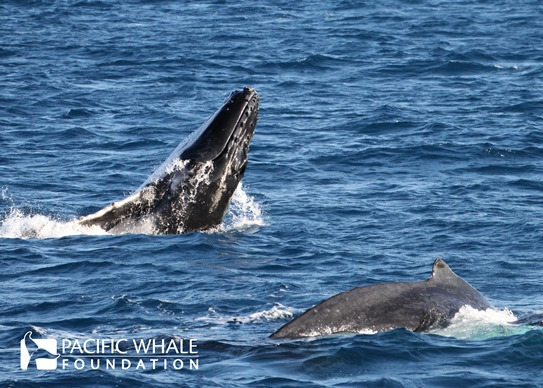
Photos taken under QLD permits: QS2011/GS040 and Registration #307. 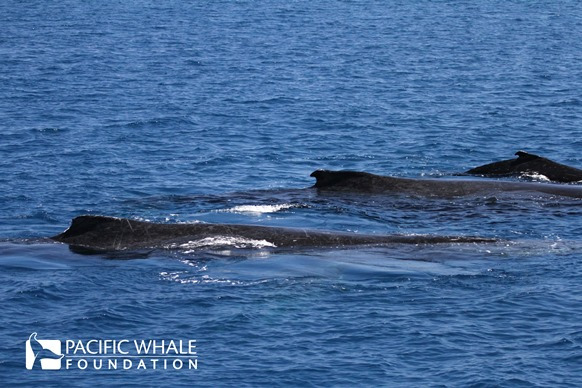
An escort is defined as a whale accompanying a mother and her calf, which are generally found to be male. Photos taken under QLD permits: QS2011/GS040 and Registration #307.
Hervey Bay is a shallow and protected bay in Australia, which provides an ideal temporary stop-over for mother humpback whales to care for their offspring during the southern migration. Using photo-identification, we know that some mother-calf pairs may stay more than a week within the bay.
Mother-calf pairs have the strongest and more lasting bond within humpback whales. The calf will stay with its mother for about a year until it is weaned. During that time, it will feed on a fat rich milk to put on weight very quickly and be able to migrate to the feeding grounds with its mother.
As in many mammal species, calves can be full of energy, performing many surface activities, such as breaching, while their mother is travelling slowly or even resting at the surface, which is often referred as “logging” given that from a distance a whale can look like a floating log at the surface. When calves are very active to the delight of passengers and researchers alike, one question often comes to mind: “where do they get all that energy?”
During their stop-over in the bay, calves also get more opportunities to learn how to behave by mimicking their mother’s actions, like “pec slapping” and breaching for example. Both mother and calf may participate at the same time, making it a priceless photo if you get the shot.
Being able to observe whales in their natural habitat, especially mother-calf pair interactions, is a real privilege. I am always in awe to witness such a strong bond and how gentle mothers can be toward their calves despite their size. They touch one another with their flippers and at times you may be lucky enough to observe a calf swimming on top of its mother’s head and being gently lifted by her rostrum (upper jaw or snout).
Calves swim very closely to their mothers, especially in the early stages of their life, for protection from predators such as killer whales. Whales that were attacked by killer whales and survived often bear distinctive “rake” marks on their flukes.
Some mothers appear more protective of their calves, staying away from a vessel. Others, on the other hand, are more relaxed and will approach a vessel with their calves.
Mothers are also very protective of their calves in the presence of one or several escorts, often swimming between her calf and escort(s), as she may be harassed by the escort exhibiting vigorous and aggressive behavior such as head lunges. If more than one escort is present, the individual defending the position closest to the female is often referred to as the “primary escort” and the others as “secondary escorts.”
After a stop-over in Hervey Bay, mother-calf pairs with or without escort(s) will continue their south migration to Antarctica. Mothers will look after their calves for almost a year. At that point in time, the calves now called “yearlings”, will become independent while on the feeding grounds or in route to the breeding grounds. Some may even accompany their mothers back to the breeding grounds. Once there, they would have completed their first round migration, one of many to come throughout their lifetime.


